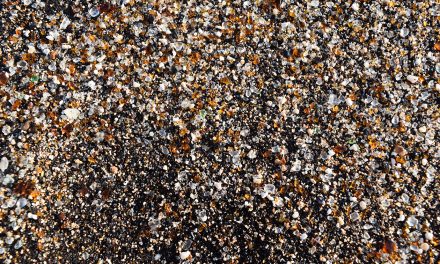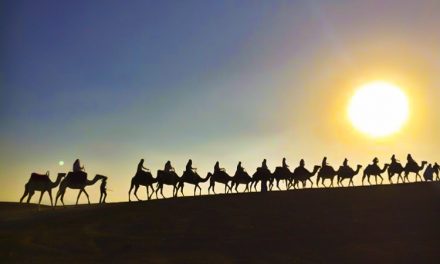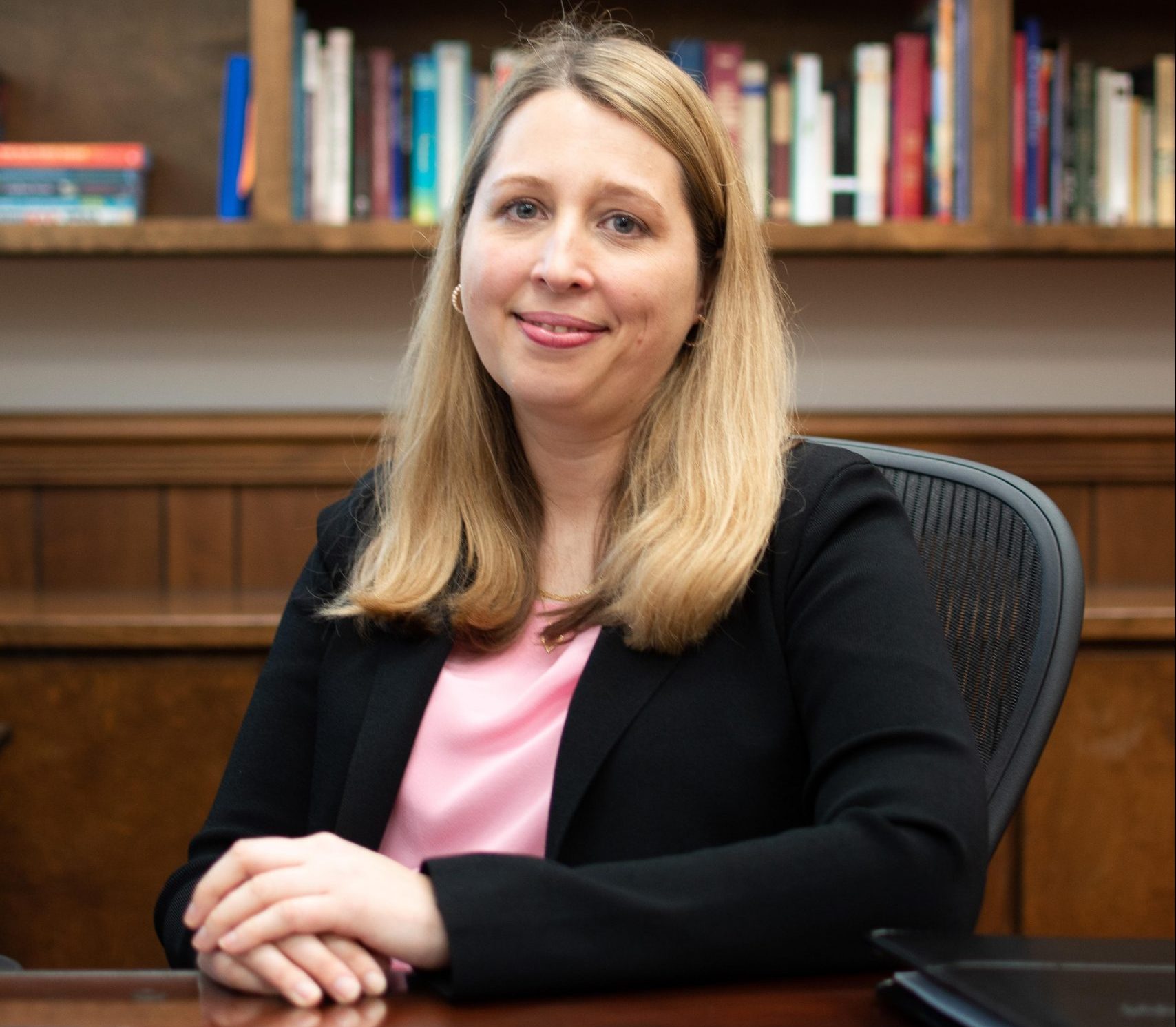It was an ordinary day in Marion, Alabama when Abby Kappelman and Cole Jones showed up. The town’s main street looked
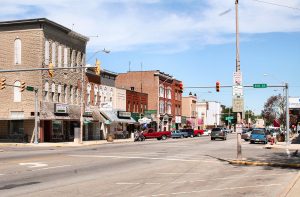
Photo courtesy of Wikipedia
like it always did: glass-front shops, a grand courthouse, an old-fashioned city hall and, as always, a population just over 3,500 going about their business, as usual.
On Washington Street, a man in his mid-60s prepared for the day inside As Time Goes By, a bookstore and coffee shop he owned and ran on the weekends. He hung a sign on the front window for the upcoming “Friday Night Jam Session” he had scheduled, and he sliced pies and cheesecake. Residents had come to know and love the simple fun that his operation stood for. Indeed, “nostalgia never gets old,” as the sign outside his store declared.
Down the street, patrons dined on classic southern food at Lottie’s Restaurant. Guests checked into the cozy, one-suite Amenities Bed and Breakfast. Customers purchased sunscreen and bug spray nearby at Fred’s Pharmacy — it was hot in Alabama in May, of course.
It really was just another day in the Black Belt, and that’s exactly what Kappelman and Jones wanted.
Kappelman and Jones, second-year Honors students at The University of Alabama, spent three weeks in May in Marion creating a multimedia documentary called Front Porch Sessions. This project paired a podcast with portrait photography featuring Marion residents of various backgrounds.
Equipped with nothing more than backpacks filled with gear, a plan and snippets of information here and there, they set out on a mission. They had a few leads, but no real contacts. Someone had told them of a man that might be of interest who would arrive at work at 9 a.m. Great — they would try there. Stories of days gone by lived within the minds of the residents of Marion, and the pair had one task: to find them.

Photo courtesy of Alabama Front Porches
“When we told [Honors College administrators] about our project, they were like, ‘This is going to work because people in Marion are going to be willing to talk to you,’” Kappelman said.
They continued walking out of the city square and passed a bar with a man sitting out front. His legs were crossed; he was leaning back with only a Coke in hand. Jones said they thought he was loitering.
Jones asked the man if he could photograph him. He obliged, and they started talking. Soon, their opinions of him changed; he started to speak about his passion for the youth of the city and the community as a whole. He had done much to serve it in his life thus far — he had run for city council and was a deacon at his church, among other things.
“Immediately, as much as I’d already thought to myself, ‘Oh, I don’t judge people ahead of time — I’m pretty good about that,’ I found myself doing that, and it was really our first interview, so it was really a great check on our first day,” Jones said.
Just that morning, they had set out in search of genuine conversations with the people of Marion, and they had surely found one.
Kappelman and Jones are members of the University Fellows Program. The program, which tasked its first-year students with the creation of an action plan to be implemented in Marion in May, emphasized social entrepreneurship and civic engagement.
“[Front Porch Sessions] seeks to understand the stories of the residents of Marion and the people of the Black Belt and also takes a look at what the future of their city looks like, what the future of their area looks like and how they think they want to get to those goals,” Jones said.
Before they connected with residents, though, students visited Marion in the semester prior to project implementation in order to gain an understanding of the community.
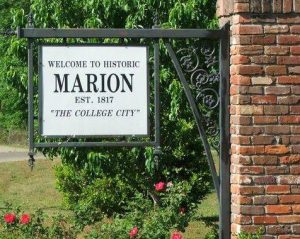
Photo courtesy of Yellow Hammer News
“The Fellows program focuses so much on how ridiculous it would be to try to address a need in a city you don’t understand,” Jones said. “We’re not going in there as saviors on a white horse. We don’t want to say, ‘This is what you need.’ We want to say, ‘What do you need? Let us help you do that.’”
The pair chose the name Front Porch Sessions because they aimed to conduct the podcast interviews in their sources’ home environment. They wanted the residents to be in a comfortable setting.
“I think a lot of times, putting ourselves in the right place provided ourselves with a lot of the questions that we needed to ask,” Kappelman said. “A lot of the questions we were asking were very probing, and it’s such a small town that it can get very political very quickly, and so I think there were a lot of people who were hesitant to address issues that we wanted to bring up simply because they didn’t want that being associated with them, but that was very minor.”
The Black Belt region of Alabama spans 19 counties. According to the Honors College website, challenges such as “economic stagnation, population flight and geographic isolation” have placed stressors on the people and communities of the Black Belt. Davis Jackson, the instructor for the second-semester Fellows course, recognized the issues facing Marion, including the loss of agricultural jobs, voluntary relocation of residents and a lingering tenseness from civil rights history.
“A lot of big civil rights events started in Marion … [like the] Selma to Montgomery march,” Jackson said. “Finding ways to reconcile that history and think about what the future of a small town in the U.S. looks like at the same time is pretty challenging.”
Marion, though, is so much more than “just a small town,” according to Jackson. He said its uniqueness has provided Honors College students with an opportunity to rethink how they view life in a small town.
“They have all these preconceived notions about what a small town is like, and then [they discover] new relationships and new stories that convince us otherwise,” Jackson said.
Kappelman and Jones are no exception — their perspective of Marion changed greatly in those three weeks. Kappelman said their surprise revolved less around the issues that exist and more around the common strengths Marion shared with other small towns. Those places have simply not yet been recognized. Their project sought to address all that Marion had going for it. Previous interview-based projects about the town focused on the history alone, Kappelman said, but they endeavored to take it a step further by showing how the residents are responding to the past.
“I think [Marion] has a really strong community, and I think the people there care about the town a lot, and that caring is not something that should be overlooked,” Kappelman said. “I think there are a lot of people from Marion who want to stay there and want to see it succeed, and I think that’s really valuable.”
Emotions during interviews often ran high, and Jones credited the residents’ passion for Marion as the driving force for this. One man they interviewed said, “If the grass seems greener on the other side, then water the grass where you are.” Jones said that was significant to him.
“In this life, nothing we have is ever enough, ever,” Jones said. “We go around and we want more, more, more — we want more success; we work towards goals and nothing’s ever enough. [In] a city that is told that they could be so much more, and that maybe they should just move to Birmingham or something, this guy said, ‘Water the grass where you are and invest where you are,’ and that really stuck with me in every aspect of life.”
While they were ultimately changed in the three short weeks spent in Marion, the pair said their project exists to serve not themselves, but others.
“We want to create that sense of pride in the city, and additionally, we had to realize that not every effort you make is going to be an immediate change,” Jones said. “We want that instant gratification, but some things are meant to help in the long term, so we do hope that it boosts tourism in Marion. We do hope that it gives Marion inhabitants a sense of pride, and we do hope to help people understand what a small town in Alabama looks like and how beautiful it is.”
For Kappelman and Jones, involvement with the project concludes at the end of the semester. But, the town that they came to cherish is still there, just a mere 57 miles down the road from the university. The stories told in the podcasts are not allegorical, but real, raw tales of life in a small town. The people they met are still there, and life goes on. Kappelman and Jones haven’t forgotten the focal point of their project — the people.
“It’s kind of natural to go back down,” Jones said. “We formed incredible relationships with more than just the people we interviewed. Wherever they are in life, they’re incredible people, and they want great things for that city and they are going to do that, whether it’s through activism, whether it’s through prayer, whether it’s through community engagement. They want that improvement, and that’s what they have going for them. That’s because it’s so small and so close-knit.
“The people are incredible — they’re beautiful inside and out, and it is just so cool to see how much they care and how much it means to them.”



